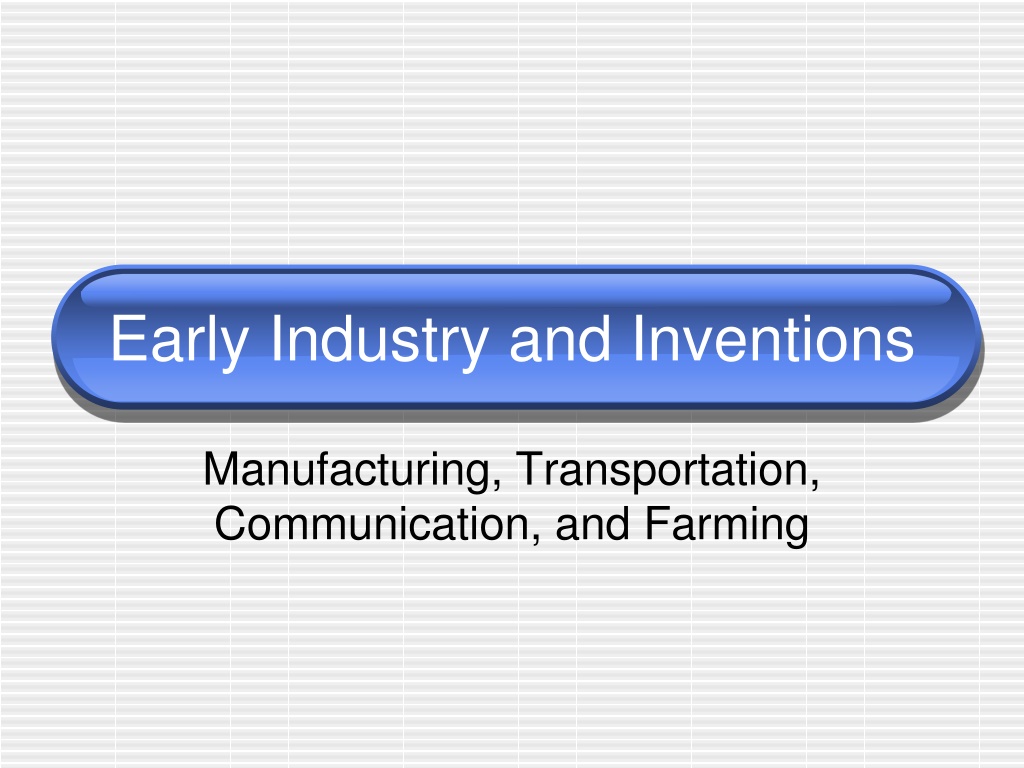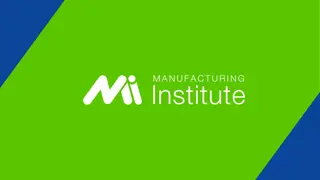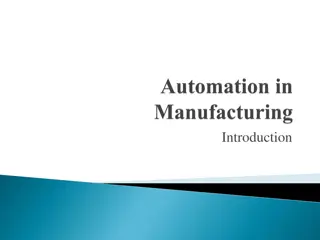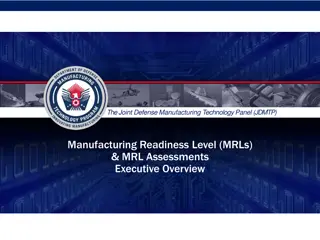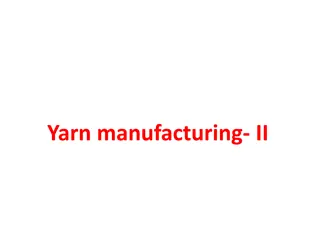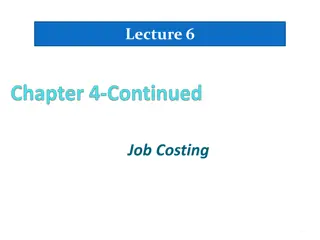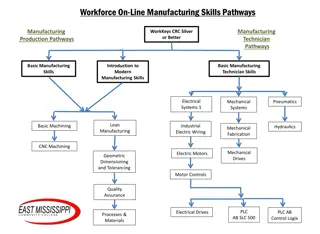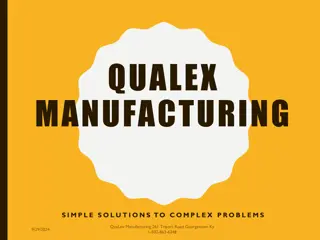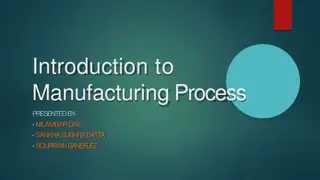Innovations in Early Industry and Manufacturing
The early stages of industrialization saw significant advancements in manufacturing, transportation, communication, and farming. This period marked a shift from home-based production to factory systems, with key inventions like the steam engine revolutionizing productivity. Initiatives like the building of the Lowell Mills in Massachusetts and the development of water-powered textile mills in the U.S. further accelerated industrial progress. However, the transition to factory work brought challenges, with negative impacts on workers and rural communities. Despite these challenges, innovations in industry played a crucial role in shaping the modern world.
Download Presentation

Please find below an Image/Link to download the presentation.
The content on the website is provided AS IS for your information and personal use only. It may not be sold, licensed, or shared on other websites without obtaining consent from the author.If you encounter any issues during the download, it is possible that the publisher has removed the file from their server.
You are allowed to download the files provided on this website for personal or commercial use, subject to the condition that they are used lawfully. All files are the property of their respective owners.
The content on the website is provided AS IS for your information and personal use only. It may not be sold, licensed, or shared on other websites without obtaining consent from the author.
E N D
Presentation Transcript
Early Industry and Inventions Manufacturing, Transportation, Communication, and Farming
Jump Start Get a reading off of the front table Read the section Free Enterprise and Factories Mark/circle/highlight all people, places, and things Make the three columns with the works found
5 Ws & H Who was involved? What did they do/invent? Where did they have the most influence? When did this take place? Why did they do/invent what they did? How did it effect the country?
Industrial Revolution Up until the Industrial Revolution, most manufacturing was done in the home Farm families produced what they needed This was known as the cottage industry In the 1700 s, Britain jumped ahead of the U.S. in industrial production 1705- steam engine Britain carefully guarded their secret why do you think they would do this?
Begins in the U.S. 1789- Samuel Slater came to the U.S. from Britain with plans for a water powered textile mill in his head What region would be good for water powered mills? Why? Progress was slow until the Embargo Act of 1807 How did this help?
Factory System The factory system had many workers under one roof working at machines. Many people left farms and moved to the city to work in factories. They wanted the money that factories paid. This change was not always for the better. In what ways would industrialization be negative?
Factories Come to New England New England was a good place to set up factories Had many fast-moving rivers Ships for quick transport of goods Willing labor force
The Lowell Mills Hire Women In 1813, Francis Cabot Lowell built a factory in Massachusetts The factory spun cotton into yarn and wove the cotton into cloth. Lowell girls lived in boardinghouses supervised by older women Strict rules Forced church attendance Worked over 12 hours a day in extremely loud factories
Think-Pair-Share How did the Industrial Revolution develop in the United States and what type of change did it generate? Pg. 325-326
Inventions: Changes in production, Transportation, and Communication Interchangeable Parts, Steamboat, Telegraph, Cotton Gin
Interchangeable Parts The first interchangeable parts were created by Eli Whitney Military hired him to make 10,000 muskets would take 2 years! Interchangeable parts- Identical parts that can be substituted in the manufacture or repair of a product Whitney created muskets with exactly the same parts, so any part would fit any gun Factories began producing matching parts to many products Sped up production, made repairs easier, and allowed the use of lower- paid, less skilled workers.
The Cotton Gin Eli Whitney also invented the cotton gin The gin took the seeds out of the cotton, which was much faster than doing it by hand From 1 to 50 lbs per day Resulted in cotton as a viable cash crop Increased the need for more land and slaves
Think-Pair-Share How did industrialization in the North and the invention of the cotton gin in the South lead to increased sectionalism? Pg. 332-334
Steamboat Some inventions increased production BUT others improved transportation and communication 1807- Robert Fulton designed a steamboat that could move against the current and the wind Clermont The steamboat created more opportunities for trade and transportation on rivers.
The Telegraph 1837- telegraph was invented by Samuel Morse Sent long and short pulses of electricity along a wire Took only seconds to communicate with another city The invention of the steamboat and telegraph brought the people of the nation closer to each other
Think-Pair-Share How did developments in communication and transportation impact growth, development, and urbanization of the U.S.? Pg. 328-329
